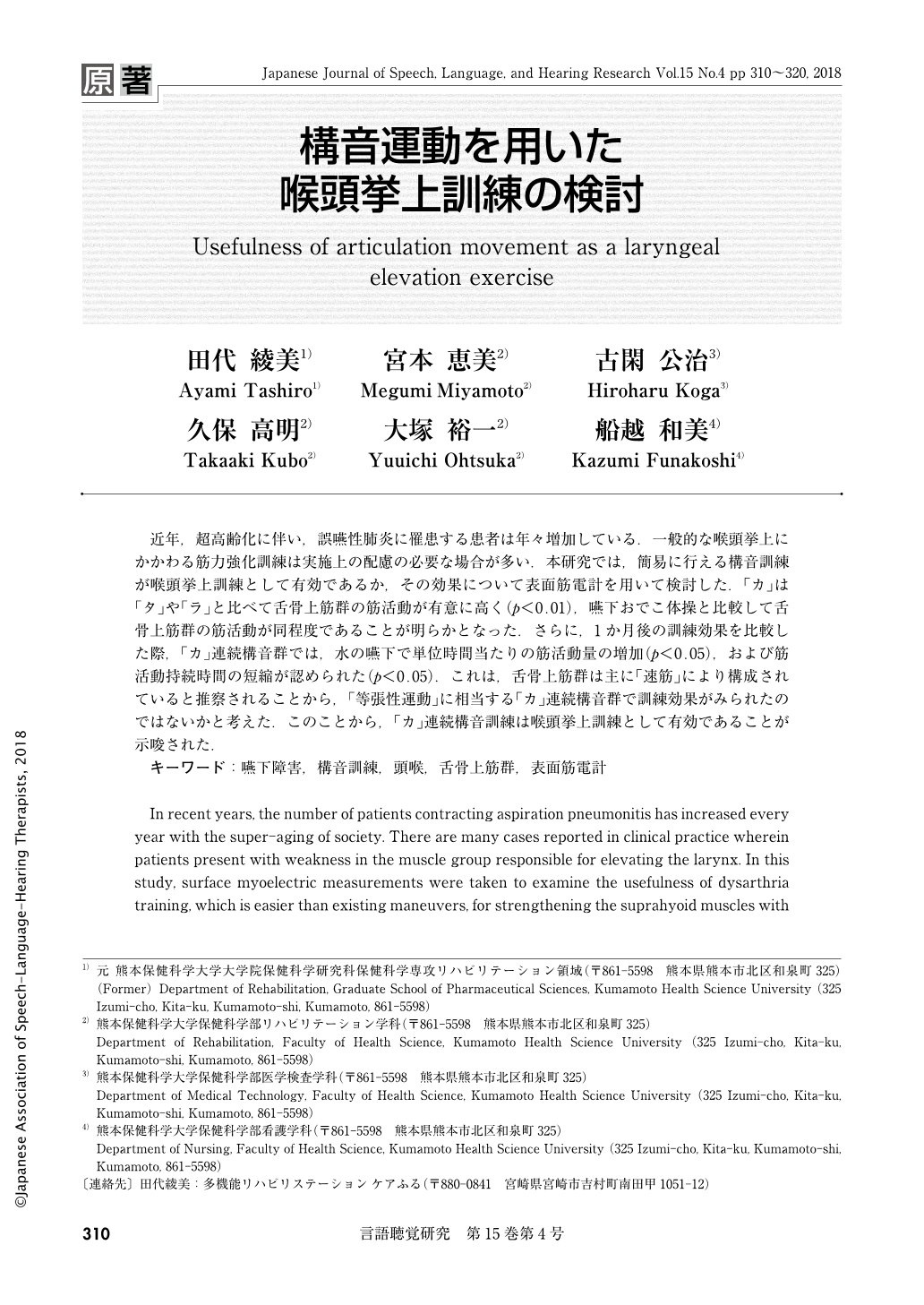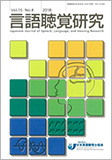Japanese
English
- 有料閲覧
- Abstract 文献概要
- 1ページ目 Look Inside
- 参考文献 Reference
- サイト内被引用 Cited by
近年,超高齢化に伴い,誤嚥性肺炎に罹患する患者は年々増加している.一般的な喉頭挙上にかかわる筋力強化訓練は実施上の配慮の必要な場合が多い.本研究では,簡易に行える構音訓練が喉頭挙上訓練として有効であるか,その効果について表面筋電計を用いて検討した.「カ」は「タ」や「ラ」と比べて舌骨上筋群の筋活動が有意に高く(p<0.01),嚥下おでこ体操と比較して舌骨上筋群の筋活動が同程度であることが明らかとなった.さらに,1か月後の訓練効果を比較した際,「カ」連続構音群では,水の嚥下で単位時間当たりの筋活動量の増加(p<0.05),および筋活動持続時間の短縮が認められた(p<0.05).これは,舌骨上筋群は主に「速筋」により構成されていると推察されることから,「等張性運動」に相当する「カ」連続構音群で訓練効果がみられたのではないかと考えた.このことから,「カ」連続構音訓練は喉頭挙上訓練として有効であることが示唆された.
In recent years, the number of patients contracting aspiration pneumonitis has increased every year with the super-aging of society. There are many cases reported in clinical practice wherein patients present with weakness in the muscle group responsible for elevating the larynx. In this study, surface myoelectric measurements were taken to examine the usefulness of dysarthria training, which is easier than existing maneuvers, for strengthening the suprahyoid muscles with respect to their ability to elevate the larynx. It was found that the active muscle mass of the suprahyoid muscles was significantly higher when repeating the syllable [ka] than repeating [ta] or [ra] (p<0.01). There was no significant difference in the active muscle mass per unit between that measured during repeating [ka] and modified Shaker exercise, although it was significantly less than that for mouth opening and closing exercise (p<0.01). After 4 weeks of training with repeating [ka], over 90% of the subjects showed increased active muscle mass and shortened duration of continuous muscle activity for swallowing water while other exercises did not produce any significant changes. Thus, dysarthria training by repeating the syllable [ka] is useful as an exercise to improve elevation of larynx.

Copyright © 2018, Japanese Association of Speech-Language-Hearing Therapists. All rights reserved.


